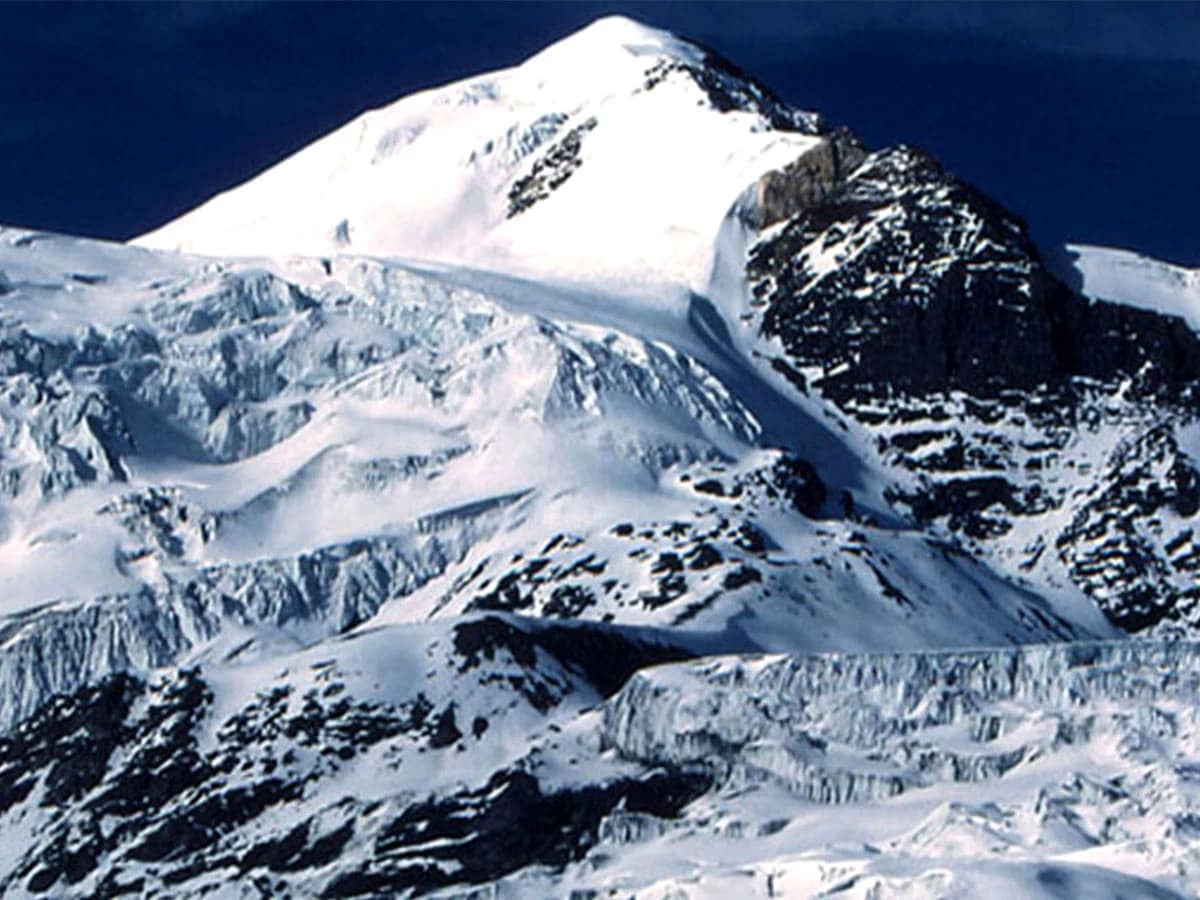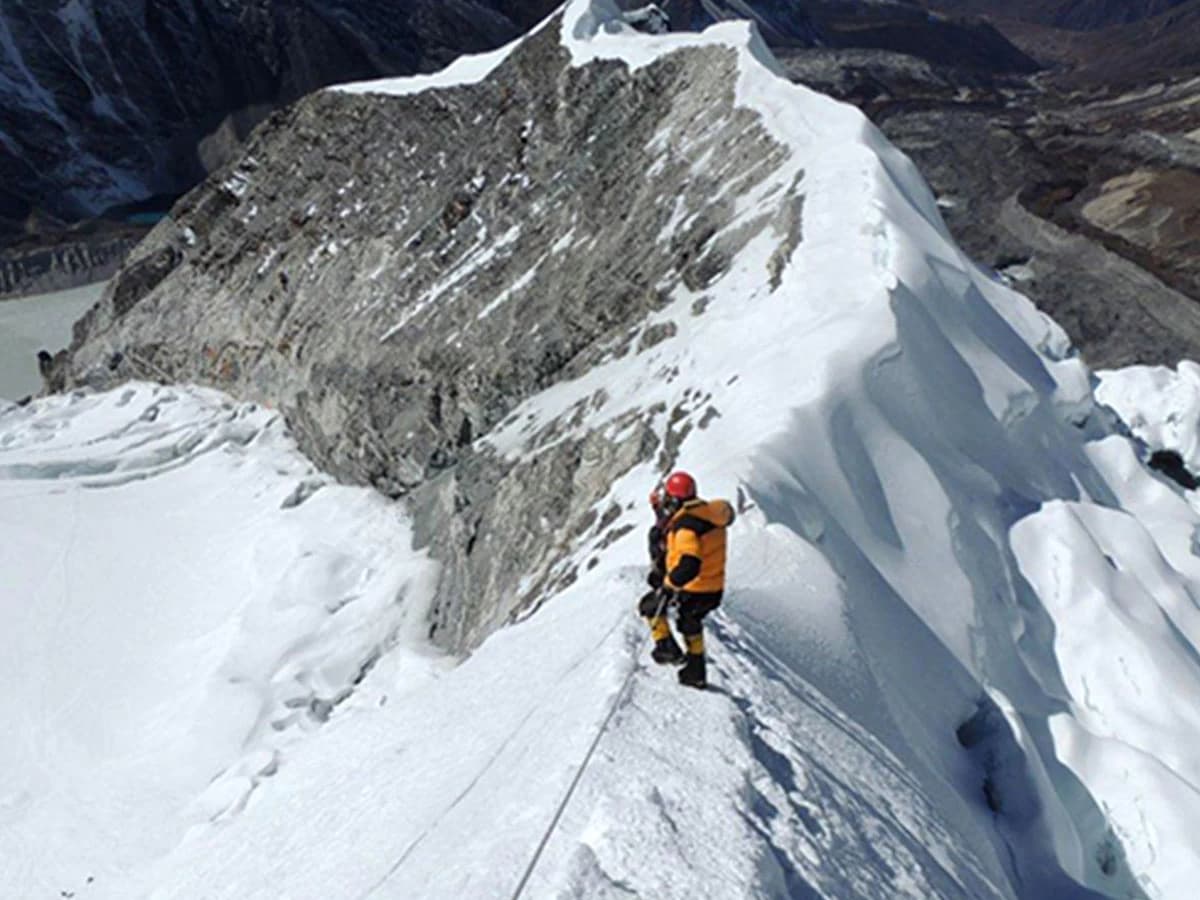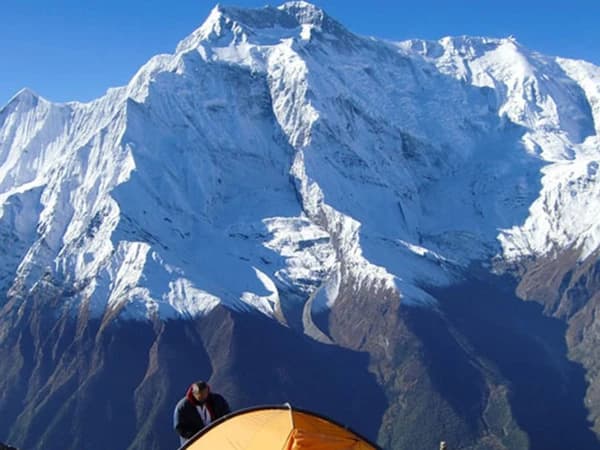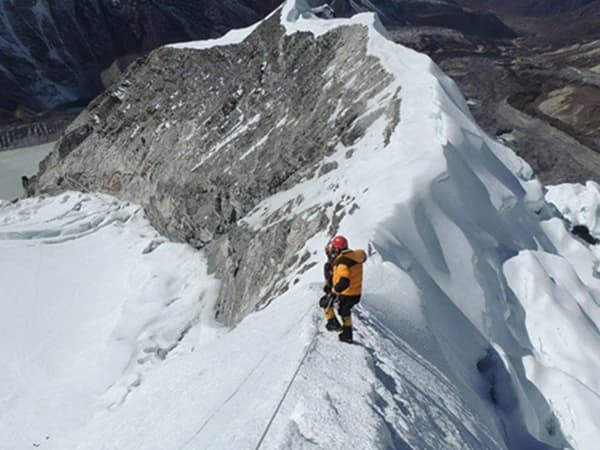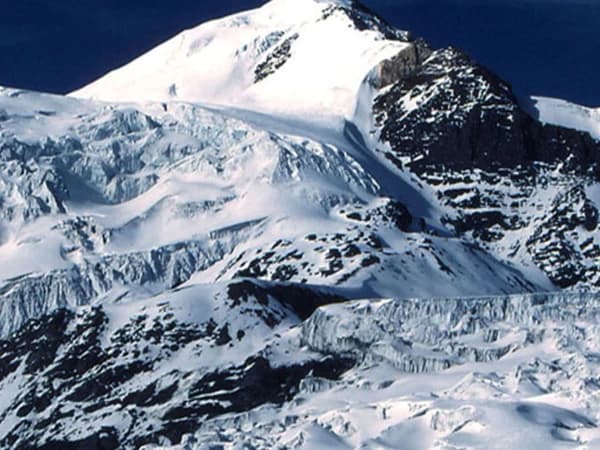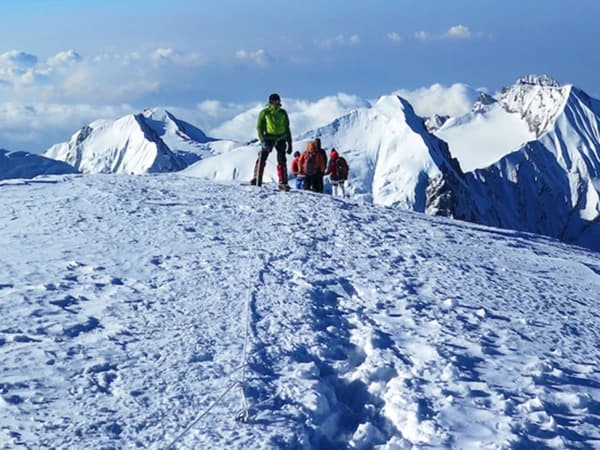Pisang Peak is situated in the Annapurna Circuit area, in the northern part of Nepal. The peak is part of the Pisang Himal, which lies in the Annapurna Conservation Area. Pisang Peak reaches an elevation of 6,091 meters (20,013 feet), making it a significant peak for climbers seeking an alpine adventure without the extreme technical demands of higher peaks.Pisang Peak was first climbed in 1955 by a team of climbers led by the German expedition.
The climb involves a combination of trekking and technical alpine climbing. The ascent requires the use of crampons, ice axes, and ropes for glacier travel and steep sections. It is considered a good peak for climbers with some mountaineering experience.
The standard route ascends from Pisang Village to Base Camp, then to High Camp, and finally to the summit. The climb involves crossing glaciers, negotiating steep snow and ice slopes, and traversing an exposed ridge near the summit. While Pisang Peak is technically less demanding compared to higher peaks like Everest or K2, it still presents significant challenges. Climbers should have a basic understanding of climbing techniques and high-altitude conditions.
From the summit of Pisang Peak, climbers are rewarded with breathtaking views of the Annapurna range, including Annapurna II, Annapurna IV, and Gangapurna. The surrounding landscape includes glaciers, snow-capped peaks, and rugged terrain.The approach to Pisang Peak follows the Annapurna Circuit, one of the world’s classic trekking routes. The trek to Base Camp offers a diverse range of landscapes, from lush forests and terraced fields to alpine meadows and high-altitude deserts.
The trek to Pisang Peak passes through several traditional villages inhabited by ethnic groups such as the Gurung and Thakali. These communities have unique cultures and traditions influenced by Tibetan Buddhism.The northern part of the Annapurna Circuit, including the areas around Pisang Peak, has a strong Tibetan influence. You’ll encounter traditional Tibetan-style monasteries, prayer flags, and chortens (stupas) along the route.
Climbing Pisang Peak requires a climbing permit from the Nepal Mountaineering Association (NMA), as well as a TIMS card and an Annapurna Conservation Area Permit (ACAP). Climbers should be in good physical condition and have experience in basic mountaineering techniques. Acclimatization is crucial to cope with high-altitude conditions.
Climbing Pisang Peak offers a rewarding experience that combines the adventure of high-altitude climbing with the beauty of the Annapurna region’s landscapes and culture.
Highlights
- panoramic views of Annapurna II, Annapurna III, Gangapurna, Tilicho Peak, and the Manaslu range.
- Pisang Peak offers a moderately challenging climb, suitable for Climbers with basic mountaineering skills.
- Rich culture and traditions of the local Gurung and Tibetan communities.
- Reaching the summit of Pisang Peak at 6,091 meters is a thrilling and rewarding experience
- The biodiversity of the Annapurna region is remarkable, with numerous plant and animal species unique to this area.
- At higher altitudes, the camping experience under the starlit Himalayan sky adds a touch of adventure.
- Climbing Pisang Peak is not just a physical challenge but also a personal journey of endurance and determination.

